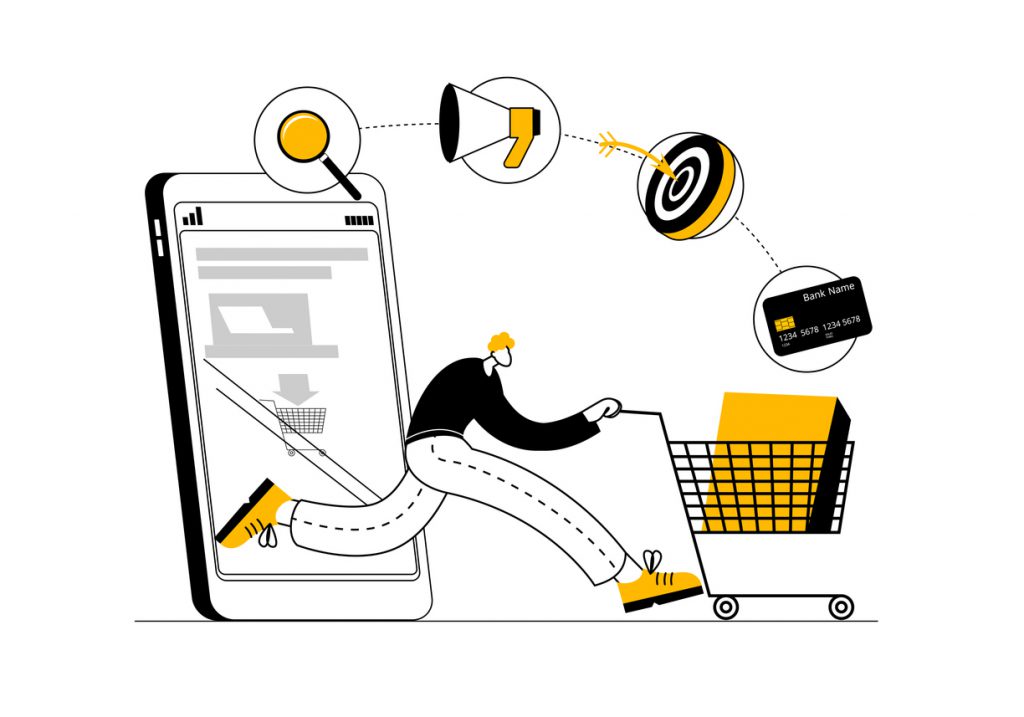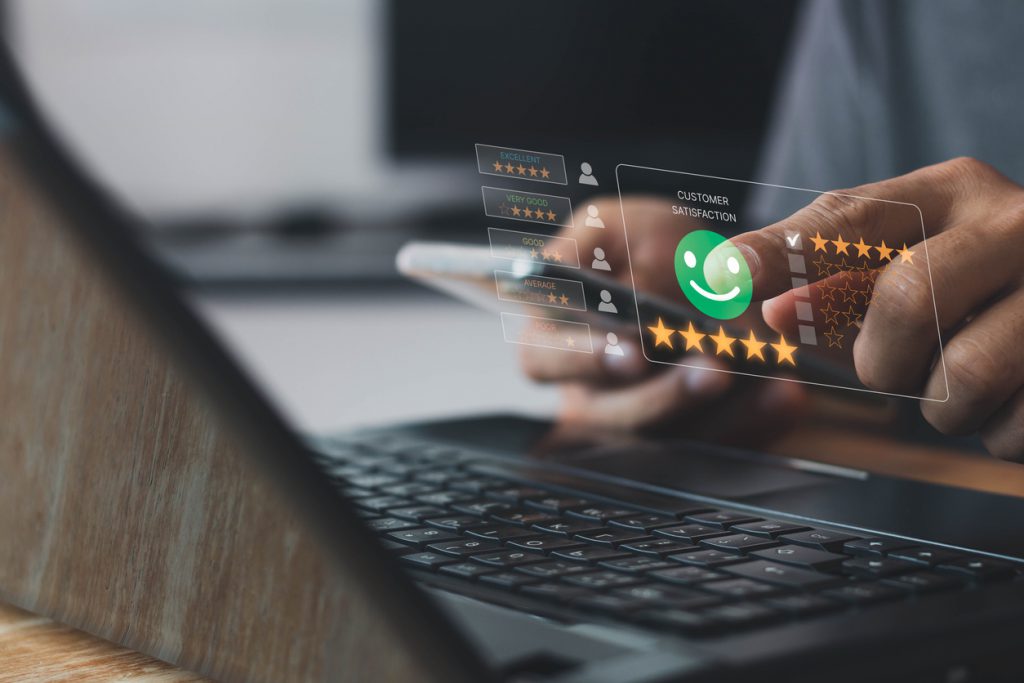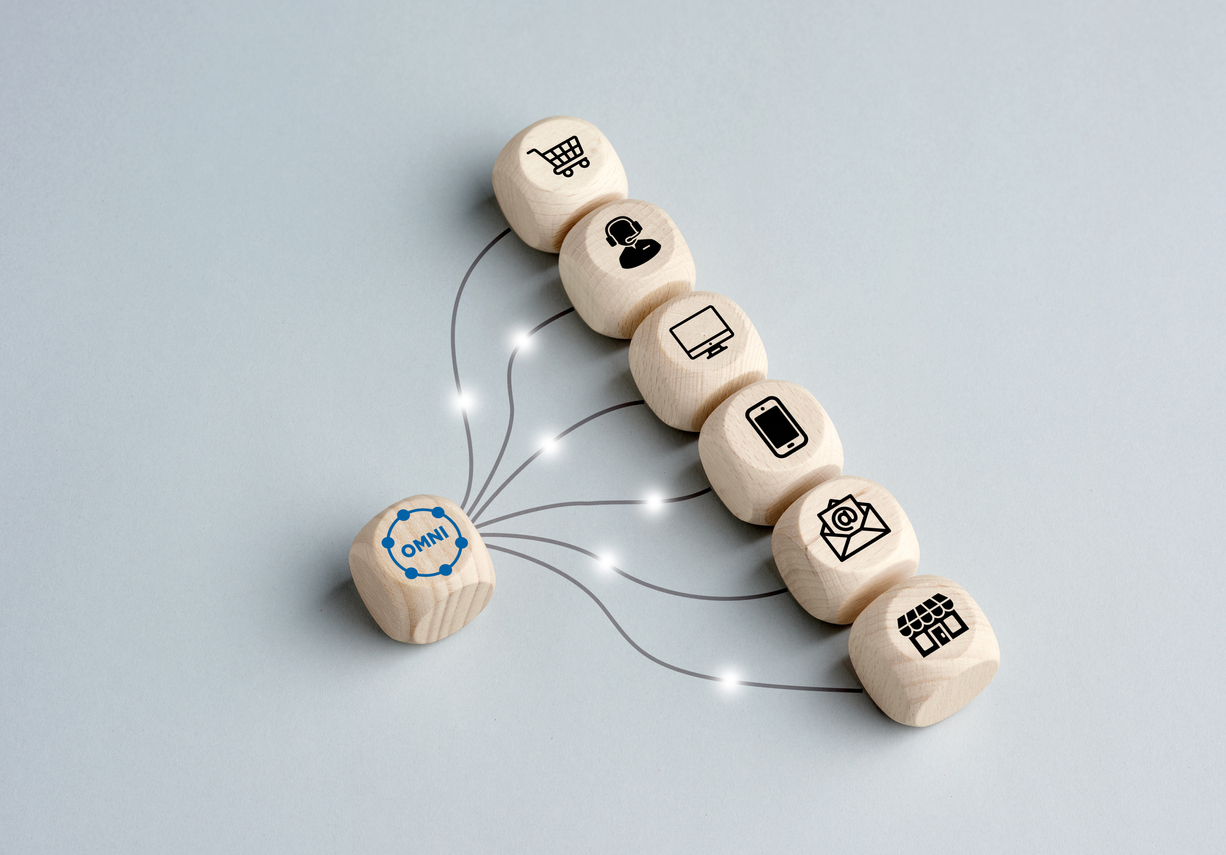The omnichannel customer journey is the new frontier for businesses aiming to provide unparalleled customer experiences. Understand how your customers traverse through various channels, interact with your brand, and the touchpoints they encounter. But, why should you invest your time in understanding this? For one, it’s the cornerstone to significantly improve customer engagement, loyalty, and, ultimately, your bottom line. Dive in to learn how you can create an effective omnichannel journey for your patrons.
What is an Omnichannel Customer Journey?
The customer journey depicts the entire process a customer goes through, from their first interaction with your brand to the moment they make a purchase or even when reaching out to customer support. An omnichannel customer journey extends this concept by encompassing the end-to-end customer journey regardless of the combination of channels the customer uses to engage.
Imagine a shopper discovering a product on your mobile app, researching it further via your website, then making a purchase in-store, and finally calling your contact center for post-purchase assistance. This continuous, seamless journey across multiple channels exemplifies the omnichannel customer journey.
Why is the Omnichannel Experience Crucial?
The omnichannel customer experience represents a holistic view of a customer’s interactions with your brand, emphasizing the need for consistency and seamlessness. Today’s consumers want their interactions across online and offline channels, like websites, mobile apps, and physical stores, to be interconnected. A cohesive omnichannel experience fosters trust, heightens customer satisfaction, and increases customer retention. Offering a seamless experience across touchpoints ensures an excellent customer experience, boosting customer lifetime value.
Touchpoints: What are they and Why do they Matter?

Touchpoints represent every moment a customer interacts with your brand. These interactions are critical junctures where businesses can influence customer perceptions, decisions, and behaviors. By recognizing and optimizing these touchpoints, especially in an omnichannel model, companies can provide a consistent experience that meets or exceeds customer expectations. Let’s break down the wide range of touchpoints that customers might encounter on their journey:
- Digital Touchpoints:
- Website: The most common touchpoint, a company’s website, is often the first interaction a customer has with the brand. This includes product pages, blog posts, and landing pages.
- Mobile App: For businesses with mobile apps, this becomes a crucial touchpoint, especially for users on-the-go.
- Email Communications: These include newsletters, promotional offers, transactional emails, and follow-ups.
- Social Media Platforms: From Facebook and Twitter to Instagram and LinkedIn, social media channels serve as primary touchpoints for engagement and communication.
- Live Chat & Chatbots: Instant communication tools on websites or apps.
- Digital Ads: Display ads, search ads, or video ads on platforms like Google, YouTube, or programmatic advertising platforms.
- Physical Touchpoints:
- Brick and Mortar Stores: Physical storefronts where customers can touch, feel, and purchase products.
- Events and Trade Shows: Exhibitions, conventions, or workshops where brands can showcase their products or services.
- Sales Meetings: Direct face-to-face interactions between salespeople and potential clients or existing customers.
- Customer Service & Support Touchpoints:
- Call Centers: Telephone-based support or sales interactions.
- Self-service Portals: Online sections where customers can resolve their issues or find information without direct interaction with company representatives.
- Feedback Surveys: Post-interaction or periodic surveys to collect customer feedback.
- Returns & Exchanges: The process customers undergo when returning or exchanging products.
- Transactional Touchpoints:
- Online Checkout: The process customers go through when purchasing online, including cart pages, payment gateways, and confirmation emails.
- In-store Checkout: Physical purchase experience, which might include interactions with salespeople, payment counters, and kiosks.
- Invoice & Receipts: Physical or digital invoices provided post-purchase.
- Content-Related Touchpoints:
- Blogs & Articles: Informative or promotional content that a potential customer might come across.
- Videos: Content on platforms like YouTube, Vimeo, or embedded on a website.
- Webinars & Online Workshops: Online sessions aimed at training, informing, or promoting to potential and existing customers.
- Referral Touchpoints:
- Word of Mouth: Recommendations from friends, family, or colleagues.
- Online Reviews & Testimonials: Feedback from other customers on platforms like Google Reviews, Yelp, or Trustpilot.
- Affiliate Marketing: Recommendations and referrals from affiliate marketers or influencers.
Understanding these touchpoints helps businesses tailor their strategies to improve the customer experience. By providing consistent and personalized interactions across channels, brands can boost customer satisfaction and loyalty.
Mapping the Customer’s Journey: A Blueprint for Success
Journey mapping is an analytical tool that helps visualize the path a customer takes with your organization. To create an omnichannel customer journey:
- Identify Touchpoints: Understand every interaction a customer has with your organization, both online and offline.
- Collect Customer Data: Harness analytics and feedback to understand customer behavior and preferences.
- Design the Journey: Construct a journey map that outlines the customer’s experience across touchpoints, ensuring a seamless omnichannel journey.
Strategies for a Successful Omnichannel Experience

Creating a seamless omnichannel journey requires strategies that cater to individual customer needs. These strategies should integrate analytics, understand customer behavior, and offer consistent service, whether online or offline. Moreover, businesses must ensure that their marketing, sales, and support teams are aligned in their efforts.
- Consistent Branding Across Channels:
- Example: A business ensures that its color scheme, messaging tone, and overall look and feel remain consistent, whether a customer is visiting its website, mobile app, social media pages, or even a physical store. This helps in building a memorable and easily recognizable brand image.
- Centralized Customer Data Management:
- Example: A retail company uses an integrated Customer Relationship Management (CRM) system to track a customer’s interactions across its website, mobile app, and in-store. This allows sales representatives to have a holistic view of a customer’s preferences and purchase history, enabling personalized service and recommendations.
- Cross-Channel Personalization:
- Example: An e-commerce store sends personalized email recommendations based on a customer’s browsing behavior on its mobile app, ensuring that the shopping experience is tailored and relevant wherever the customer engages.
- Integrated Inventory Management:
- Example: A fashion retailer allows customers to check the availability of specific items in physical stores through its website or app, and even reserve products for in-store pickup, providing a seamless shopping experience.
- Unified Customer Support:
- Example: A tech company offers customer support via phone, live chat, email, and social media. They ensure that if a customer switches from one channel to another, the conversation’s history transitions smoothly, so the customer doesn’t have to repeat their issue.
- Leveraging AI and Chatbots:
- Example: A travel agency utilizes AI-driven chatbots on its website and mobile app to provide instant responses to common customer queries, and seamlessly redirects more complex queries to human agents.
- Optimize for Mobile:
- Example: A restaurant ensures its online reservation system is as intuitive and user-friendly on mobile devices as it is on desktops, understanding that many customers might book on-the-go.
- Feedback Loop Across Channels:
- Example: A cosmetic brand collects feedback on its new product through its website, social media polls, in-store feedback forms, and email surveys. This comprehensive feedback helps the brand understand customer sentiments across various touchpoints.
- Reward Loyalty Across Platforms:
- Example: A coffee shop offers a loyalty program where customers can earn points for every purchase, whether made in-store, through the brand’s app, or on its website. The points can then be redeemed across any channel.
- Real-time Analytics and Adaptation:
- Example: An online electronics retailer monitors customer behavior on its website and notices that many customers drop off at the payment gateway. The retailer quickly identifies an issue with its payment processor and switches to a more reliable one, ensuring minimal disruption to the customer experience.
Implementing these strategies requires effort, coordination across departments, and often an investment in technology. However, the payoffs in terms of customer satisfaction, loyalty, and ultimately revenue can be substantial. By focusing on the customer and ensuring they receive an excellent experience regardless of where and how they interact with a brand, businesses can truly harness the power of the omnichannel approach.
Using Analytics to Understand Customer Behavior
In the world of omnichannel marketing and customer journey management, analytics plays a pivotal role. Analyzing data from various touchpoints helps businesses make informed decisions, identify areas for improvement, and tailor their strategies to match the ever-evolving preferences of their customers. In this realm, there are several critical metrics that marketers can use:
- Customer Acquisition Cost (CAC):
- This metric calculates the average expense of acquiring a new customer. By comparing CAC across channels, you can determine which channels are most cost-effective in your omnichannel strategy.
- Customer Lifetime Value (CLV):
- CLV measures the total revenue a business can expect from a single customer over the course of their relationship. It’s essential to track this metric across various channels to gauge the effectiveness of the omnichannel customer experience.
- Cross-channel Engagement:
- Track the rate at which customers transition from one channel to another, such as from email to mobile app or from social media to the website. It helps understand the seamless experience across channels.
- Customer Retention Rate:
- This metric gauges how effectively a business retains its customers over a specific period. A high retention rate indicates a positive omnichannel customer experience.
- Net Promoter Score (NPS):
- NPS measures customer loyalty by asking them the likelihood of recommending the brand to others. By segmenting NPS scores by channel, you can gain insights into which channels provide the best customer experience.
- Churn Rate:
- This metric calculates the percentage of customers who stop doing business or interacting with a brand over a specific period. An increasing churn rate might suggest problems in the omnichannel user experience.
- Conversion Rate Across Channels:
- Analyze the percentage of users who take a desired action, such as making a purchase or signing up for a newsletter, segmented by channel. This helps in pinpointing which channels drive the most conversions and where there might be gaps in the omnichannel journey.
- Average Order Value (AOV):
- By tracking AOV across different channels, brands can understand where customers are spending the most and tailor their marketing strategies accordingly.
- Customer Satisfaction (CSAT):
- Often collected through post-purchase or post-interaction surveys, CSAT scores provide direct feedback on customer satisfaction, which can be segmented by channel for more granular insights.
- Multi-touch Attribution:
- This advanced metric analyzes the various touchpoints a customer interacts with before conversion. It provides insights into the combination of channels and interactions that lead to the most conversions.
- Response and Resolution Time:
- Particularly crucial for customer support touchpoints. Measuring how quickly customer inquiries or issues are addressed across channels can provide insights into the efficiency and effectiveness of omnichannel customer support.
- Cart Abandonment Rate:
- Especially relevant for e-commerce, this metric tracks the number of users who add products to their cart but don’t complete the purchase. By understanding abandonment rates across different channels, businesses can identify pain points in the checkout process.
Leveraging these metrics, businesses can gain a deeper understanding of the omnichannel customer journey. This data-driven approach ensures that brands can create a seamless and personalized experience, leading to increased customer loyalty and higher returns on their marketing and customer service efforts.
How Does an Omnichannel Approach Improve Customer Satisfaction?

- Unified Experience Across Platforms:
- Regardless of whether a customer is shopping online, through an app, or in-store, the experience is harmonized. This seamless transition across touchpoints amplifies convenience and flexibility.
- Personalized Interactions:
- With data insights from various channels, businesses can offer tailored interactions. A customer’s online browsing can inform in-store product recommendations, enhancing the shopping experience.
- Efficient Problem Resolution:
- An omnichannel approach ensures that support is available across multiple platforms. Whether it’s social media, phone, or in-person, this multiplicity speeds up and streamlines issue resolution.
- Enhanced Engagement:
- Being present on multiple platforms allows businesses to engage customers more effectively, ensuring they can reach out wherever they are most comfortable.
- Consistent Branding:
- Uniform experience and messaging across channels foster trust and establish a brand’s credibility.
- Feedback Integration:
- Multiple channels also mean diverse feedback avenues. This feedback can drive improvements that resonate with customers’ real needs.
- Flexibility for Customers:
- The omnichannel model respects the non-linear customer journey, catering to individual preferences at every stage.
Integrating Omnichannel Strategies Across Departments
The integration of omnichannel strategies across various departments is paramount to ensuring a unified customer experience. When every department, from marketing and sales to customer support and logistics, operates in alignment with a shared omnichannel vision, it creates a seamless customer journey that fosters brand loyalty and satisfaction.
Starting with the Marketing Department, the omnichannel approach is all about creating a cohesive brand message that resonates across all platforms. Whether a customer sees an ad on social media, reads a newsletter, or visits the official website, the messaging should be consistent. This helps in not only reinforcing the brand’s identity but also ensuring that customers receive a uniform brand perception regardless of where they engage.
The Sales Department plays a pivotal role in the omnichannel experience. They must be equipped with the tools and data to understand a customer’s history with the brand. If a customer explored a product online, the sales team in a physical store should be aware of this interest, facilitating a more personalized sales approach. This interconnectedness ensures that the customer feels recognized and valued, regardless of the touchpoint they choose to interact with.
Customer Support is another crucial area for omnichannel integration. A customer reaching out for assistance expects the support team to have a comprehensive understanding of their past interactions and purchases. This means if they’ve had a prior chat on the website, they shouldn’t have to repeat the same information when calling the support line later. An integrated system across departments can ensure that all customer interactions are logged and easily accessible, making the support process smoother and more efficient.
Furthermore, the Logistics and Supply Chain Departments are integral to delivering on the promises made by the sales and marketing teams. They must be looped into the omnichannel strategy to ensure that product availability and delivery expectations are consistently met. If a customer checks product availability online and decides to pick it up in-store, there should be no discrepancies in the inventory information provided.
Additionally, departments like R&D and Product Management can also benefit from an omnichannel strategy. Feedback and insights gathered from various channels can guide product development and innovation, ensuring products are tailored to meet customer needs and expectations.
To truly realize the benefits of an omnichannel approach, integration must be holistic. It requires technology, training, and a company culture that places the customer at the heart of every strategy. Only when every department is synchronized in its approach can a business deliver the seamless and personalized experience that today’s customers expect and value.
The Role of Mobile Apps in the Omnichannel Journey
Mobile apps have transformed the omnichannel landscape, seamlessly bridging online and offline brand interactions. With smartphones often being the initial touchpoint for many consumers, apps provide a direct, personalized channel that caters to individual preferences and behaviors.
Integrated with device features, mobile apps can enhance user experience in unique ways. Geolocation services might guide users to nearby stores or offer localized promotions, while augmented reality can provide virtual product trials. Beyond shopping, apps engage users post-purchase through order tracking and customer support features.
The data gathered from app interactions also proves invaluable. Brands can derive insights on user behavior, informing broader business strategies ranging from product placement to marketing campaigns.
Furthermore, mobile apps deftly merge the digital and physical realms. Features like “click and collect” exemplify this, allowing online ordering with in-store pickups. This interconnectedness reinforces the notion of a fluid, consistent brand experience across various platforms, solidifying mobile apps’ crucial role in the omnichannel journey.
The Future: Predictions for the Omnichannel Customer Experience

The evolution of the omnichannel customer experience has been swift and relentless, with emerging technologies and changing consumer behaviors shaping its trajectory. As we look forward to the horizon, several predictions stand out that are likely to define the omnichannel landscape in the coming years:
- AI-Powered Personalization: With Artificial Intelligence and machine learning technologies maturing, we can anticipate a hyper-personalized shopping experience. AI will anticipate customer needs, analyzing past behaviors to offer product recommendations, content suggestions, and even personalized discounts. This means the customer journey will be curated even before the customer makes a move.
- Virtual and Augmented Reality Shopping: VR and AR technologies are set to revolutionize the online shopping experience. Consumers might virtually “try on” clothes, explore a 3D model of a product, or even take a virtual tour of a hotel room before booking. This will merge the tangibility of in-store shopping with the convenience of online platforms.
- Integrated IoT Ecosystem: The Internet of Things (IoT) will play a pivotal role. Smart devices, from refrigerators to wearables, will be integrated into the shopping ecosystem. Imagine your refrigerator suggesting recipes based on its contents and directly ordering missing ingredients from the grocery store.
- Seamless Payment Solutions: The checkout process will become more streamlined with innovations in payment technologies. Beyond digital wallets and contactless payments, biometric solutions like facial recognition or fingerprint scans might become standard payment methods, offering both convenience and security.
- Sustainability as a Core Aspect: With growing consumer awareness about environmental concerns, sustainability will be an integral part of the omnichannel experience. Brands might offer incentives for eco-friendly purchasing decisions or provide detailed supply chain transparency to assure consumers of sustainable practices.
- Dynamic Pricing Models: Leveraging AI and real-time data analytics, prices might adjust dynamically based on demand, stock levels, or even a customer’s purchase history. This could mean more personalized pricing and promotions, enhancing the customer’s perception of value.
- Enhanced Use of Chatbots and Virtual Assistants: Customer support will be increasingly automated. Chatbots and virtual assistants will handle a majority of queries, backed by AI to understand and respond to more complex customer needs, ensuring 24/7 assistance.
Mapping the Future of Your Customer’s Journey
The omnichannel customer journey isn’t merely a trend—it’s the new standard for brands aiming to thrive in this digital era. The melding of technology, personalization, and holistic customer experience is shaping a future where the consumer is at the heart of every strategy, and where their journey with a brand becomes more streamlined, insightful, and engaging.
But understanding and optimizing this intricate web of interactions requires more than just cursory insights. It demands a deep dive into data, an understanding of the emerging trends, and the right tools to capture, analyze, and optimize each touchpoint.
If you’re keen on understanding this in greater depth and envisioning how this could revolutionize your brand’s approach, we have something special for you. Download our case study and discover how Wizaly is empowering brands to meticulously monitor and seamlessly optimize their customer journeys. Dive into real-world scenarios, witness transformative results, and visualize a roadmap that aligns with your brand’s ambition. The future of customer experience awaits. Are you ready to navigate it?



